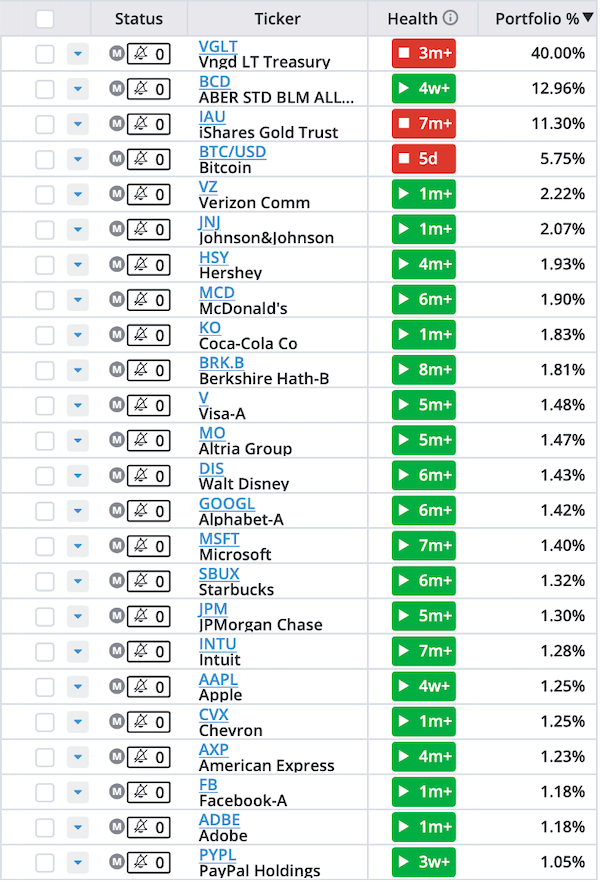The Wait Is Finally Over
Wow!
I introduced this series on “portfolio thinking” a few weeks ago for one simple reason:
I believe managing portfolio risk is one of the most important parts of investing that most folks get wrong.
But to be perfectly honest, I wasn’t sure how Money Talks readers would receive it.
After all, I suspect the average person would rather go to the dentist than read about topics like “risk parity.”
Well, I’m thrilled to report that the response has been incredible so far. In fact, I’ve received so much great feedback — and so many thoughtful questions — I’ve decided to make a change.
As I mentioned last time, I was planning to wrap the series up this week by sharing a special version of the All Seasons portfolio designed exclusively for TradeSmith subscribers.
This version combines Ray Dalio’s powerful fundamental approach with our proprietary TradeSmith risk-management and market-timing tools. And I’m super excited to share it with you.
One could argue this portfolio could be worth tens of thousands of dollars to you. After all, you could choose this as the way to invest for the rest of your life.
With that said, there’s simply no way I can fully explain all the ins and outs of this new portfolio AND answer all your questions today. So, here’s what we’re going to do…
Because I don’t want to make you wait another minute, I’m going to unveil this new TradeSmith All Seasons portfolio today. I’ll show you exactly what’s in it and what you need to know to start investing.
Then next week, I’ll explain more about how I built this portfolio, show you the best ways to manage it, and answer some of your most important questions. (Although depending on how many additional questions I receive this week, I may extend the series one more week and wrap it all up with a dedicated Q&A.)
Sound good? Alright, let’s get to it.
Without further ado, here is the TradeSmith All Seasons portfolio:

I’m also providing a link where you can download a CSV file that will make it easy to add this portfolio as a watch list in your own TradeSmith Finance account.
You’ll notice that this portfolio shares some similarities with the upgraded “buy and hold” All Seasons portfolio I shared last week.
It still has a significant allocation to long-term Treasury bonds via a very low-cost ETF. It still has around 30% in stocks. And it still owns the same investments in commodities (via the Aberdeen Standard Bloomberg All Commodity Longer Dated Strategy K-1 Free ETF (BCD)), gold (via the iShares Gold Trust (IAU)), and Bitcoin (BTC/USD).
However, there are several notable differences, as well.
First, the allocations to inflation hedges are a little higher than they were previously.
Second, this portfolio no longer has exposure to intermediate-term Treasury debt.
And finally, you’ll notice I’ve swapped out the two stock market index funds in favor of a diversified, risk-balanced portfolio of 20 high-quality stocks created with our Pure Quant portfolio-builder tool.
Again, I’ll explain why (and how) I made these changes next week.
In the meantime, if you’re interested in getting started with this portfolio immediately, there’s just one critical point you need to understand.
Unlike the traditional versions of the All Seasons I showed you earlier in this series, this is not a buy-and-hold portfolio.
Instead, this portfolio follows our TradeSmith Health Indicator rules:
- Positions that have a Green Health status are considered a “buy.”
- Positions with a Yellow Health status are a “hold.” If you already own them, don’t sell. But you shouldn’t buy them today.
- Positions with a Red Health status are a “sell” or “do not buy.” Allocations to these positions should remain in cash. And any position that moves from Green or Yellow to Red (i.e., triggers its Health Indicator Stop Loss) should be sold.
None of these positions currently have a Yellow status. However, three positions are Red: long-term Treasury bonds (VGLT), gold (IAU), and Bitcoin. As a result, nearly 60% of this portfolio should be in cash today.
Now, 60% may seem like an unusually high cash position. However, as I’ll show you next time, this portfolio should still outperform the fully invested, buy-and-hold All Seasons portfolio over time.
The only possible exception to these Health Indicator rules pertains to Bitcoin.
As I explained in my crypto series in March, Bitcoin offers an “asymmetric” risk profile you can’t find in most other assets. Even a small position can grow into an enormous amount of money over time.
Depending on the size of your overall portfolio, you might prefer to simply buy and hold your Bitcoin rather than follow our Health Indicator signals.
That’s it for this week.
I’d love to hear what you think about this portfolio at [email protected]. And please, continue to send me your questions as well. As always, I can’t personally respond to every letter, but I read them all.